The Complete Guide to Temporary Email Services
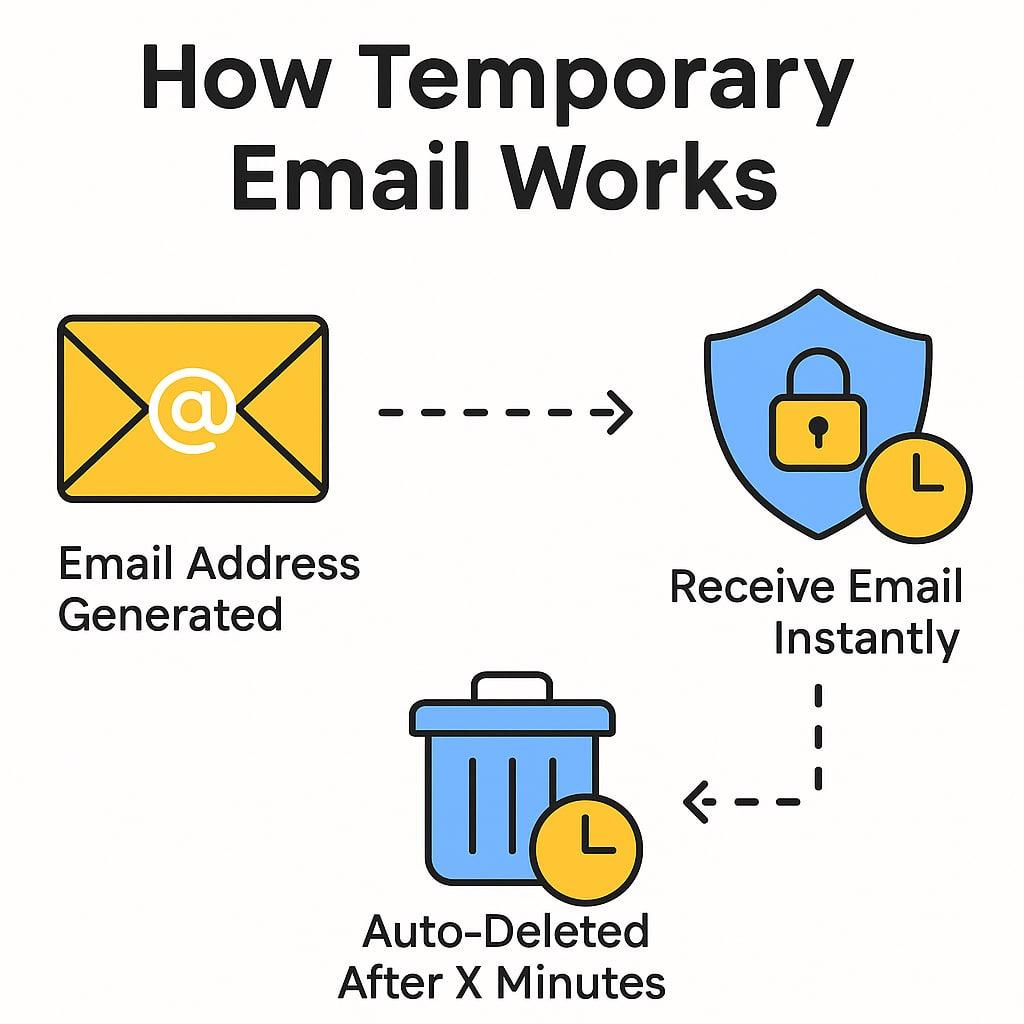
Temporary email offers real protection from unsolicited messages and reduces the risk of your personal inbox being cluttered with spam. People use these disposable email addresses for online registrations, downloading resources, or trying out new services, keeping their real email private and safe.
Real cases show that temporary emails can help avoid targeted advertising, phishing attempts, and privacy breaches. Using a separate address also protects personal information if the website's database is compromised.
Those looking to maintain security and control over their digital presence can benefit from a temporary email as a simple, effective solution. It allows users to manage their communications and reduce unwanted email stress.
Before we dive into the "why," it’s important to understand the fundamental difference between disposable and permanent accounts. If you're new to the concept, we recommend starting with our detailed comparison: Temporary vs. Permanent Emails: What’s the Difference?
What Is a Temporary Email?
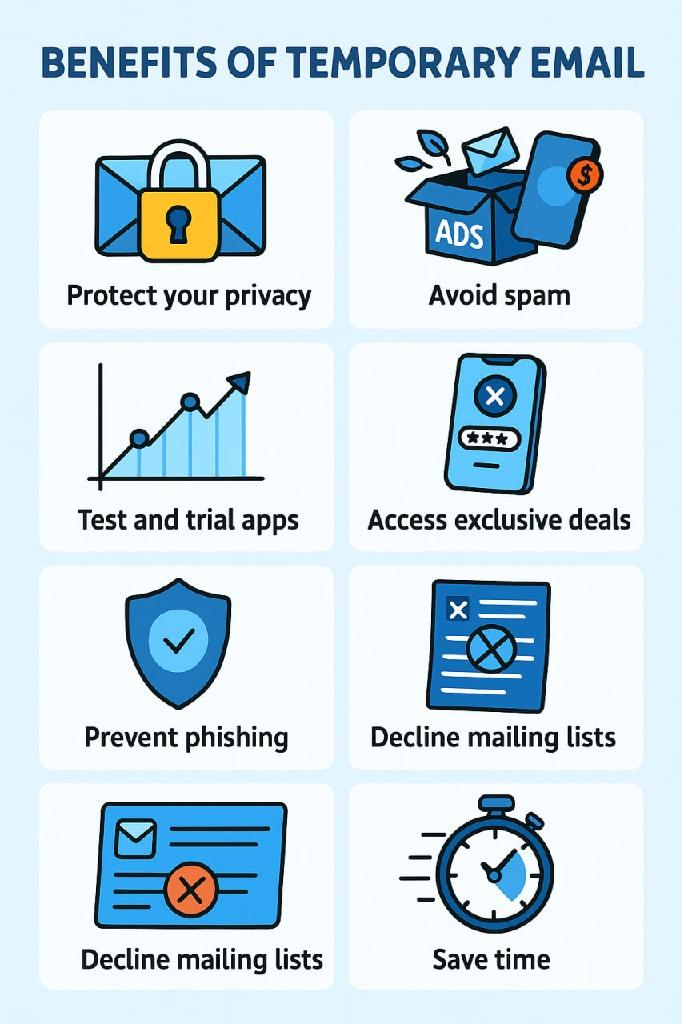
Temporary email provides users with disposable addresses that can be used for a short period. These addresses are designed to help people avoid spam, protect privacy, and bypass the need for using their main email accounts during sign-ups or online activity.
Key Features of Temporary Emails
Temporary emails offer immediate access without registration. Most services generate random email addresses instantly, letting users receive emails without creating an account or entering personal details.
A defining feature is the short lifespan. Messages to these addresses are stored temporarily—often only for a few minutes to an hour—after which both the emails and the address are deleted automatically.
Data is rarely stored for long, and attachments may be restricted or blocked. Many disposable email services also block tracking or hidden scripts inside emails, adding an extra layer of protection.
Most services offer features such as:
- No sign-up or password required
- Automatic inbox refreshing
- Disposable address for each session
- No long-term message storage
How Temporary Emails Work
A temporary email provider creates a unique, random address on demand. When a site requests an email for registration or download, the user can copy the temporary address and use it instead of their real one.
Incoming messages to the temporary address appear in a web interface instantly. The user can view, open, or copy any activation links from the emails.
Once the set time expires—usually 10-60 minutes—the inbox and all received messages are deleted. Some platforms allow users to reset the timer or generate a new address for further use.
This process ensures no lasting connection to any real-world identity or permanent inbox, making it difficult for marketers or scammers to track the user.
Differences Between Temporary and Permanent Emails
Temporary emails are designed for short-term, single-use scenarios. Permanent email addresses, like Gmail or Outlook accounts, are meant for ongoing communication, personal contacts, and data backup.
| Feature | Temporary Email | Permanent Email |
|---|---|---|
| Lifespan | Minutes to hours | Indefinite |
| Registration | No | Yes |
| Use Cases | Sign-ups, one-time use | Personal/work |
| Message Storage | Deleted after expiry | Stored indefinitely |
| Spam Control | High | Varies |
People typically use temporary emails to prevent inbox clutter and avoid sharing personal information. Permanent emails are best for secure, long-term correspondence and saving important messages over time.
Benefits of Using Temporary Email

Temporary email addresses offer practical solutions for online privacy, reduce inbox clutter from unwanted messages, and make creating accounts much simpler and faster. They give users more control over their personal information and online experiences.
Protecting Your Privacy Online
Using a temporary email address prevents personal details from being linked to every website or service accessed. This separation helps reduce the exposure of primary email accounts to data leaks or breaches.
If a platform is compromised, only the temporary email—and not any sensitive, personal inbox—is at risk. Many people use temporary emails when interacting with unfamiliar services, limiting the amount of personal information shared.
Some websites require email verification but don't need ongoing contact. In these cases, a temporary address enables access without sacrificing privacy. This simple step reduces the likelihood of identity theft and unwanted tracking.
Avoiding Spam and Unwanted Subscriptions
Many online forms, newsletters, and promotions ask for an email address but later use it to send promotional content or share it with third parties. According to reports from cybersecurity firms like Spamhaus, billions of spam emails are sent every day, making spam filters a necessity, not a luxury. Temporary email services help users avoid their primary inbox becoming overloaded with this spam.
When someone uses a disposal email for a one-time download or registration, any future messages sent to it are simply ignored or deleted. This approach helps organize real emails by preventing irrelevant ads and messages from reaching the main account.
Temporary emails break the cycle of ongoing spam, so there's no need to unsubscribe or block unwanted senders later. It's particularly useful when testing a new app or joining a site for just a short period.
Streamlining Sign-Up Processes
Temporary email services offer quick, no-registration addresses that cut down the time needed to sign up for online tools, software trials, or content downloads. There is often no need to set up a permanent account or remember another password.
These addresses can be generated instantly and used for verification codes or access links. For users who frequently need to test platforms, temporary emails accelerate the registration process and help avoid manual inbox cleanup.
| Step | Standard Email | Temporary Email |
|---|---|---|
| Email required | Yes | Yes |
| Inbox Management | Must filter and delete spam | Disposed after use |
| Privacy Concerns | Higher—linked to main account | Lower—no personal data |
This method is convenient for developers, testers, and users trying multiple services without committing their main email.
Security Advantages of Temporary Email
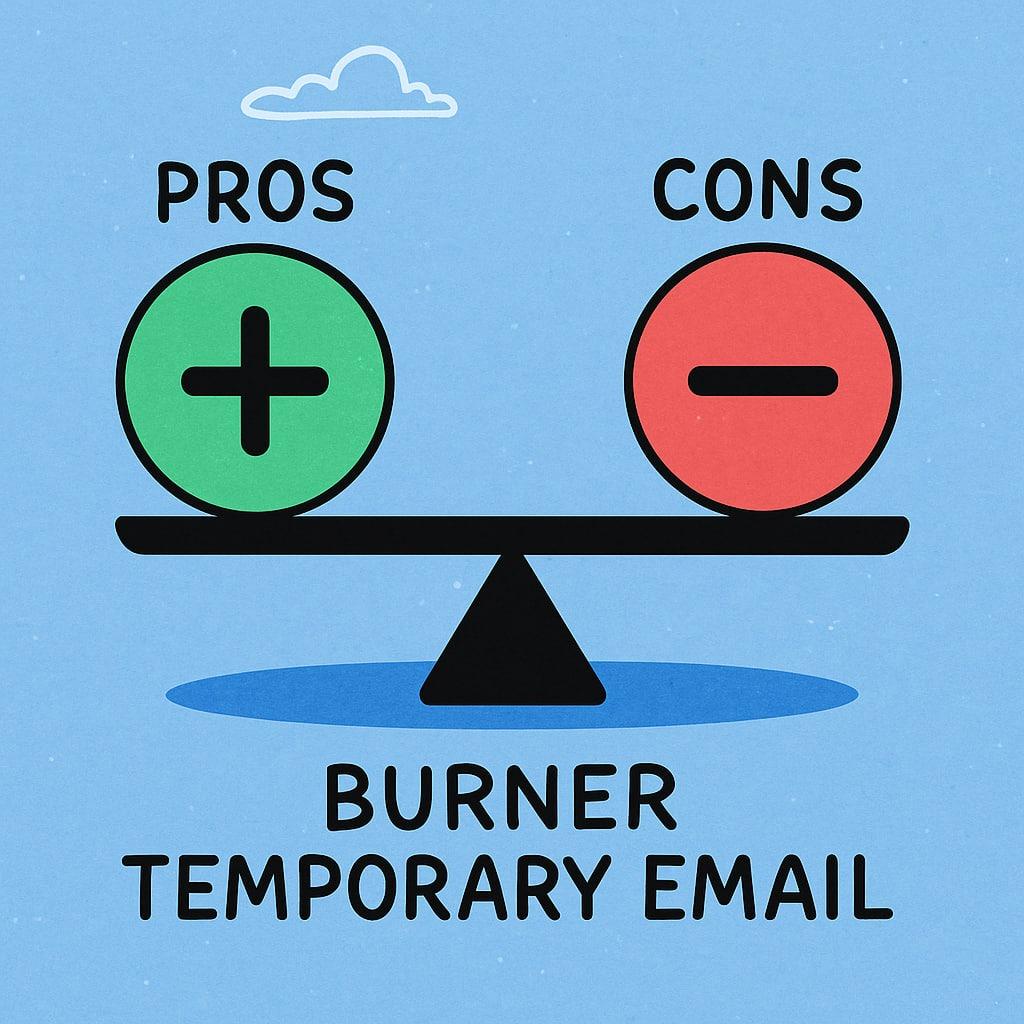
Temporary email services provide enhanced privacy by allowing users to avoid exposing their personal email addresses. They also help reduce the risk of becoming a target for data leaks, phishing, or unwanted account access.
Minimizing Data Breach Risks
Users often need to provide email addresses to register for websites and services. When these platforms experience data breaches, personal emails and associated account information can be exposed and circulated on the internet.
Temporary email addresses offer an additional layer of security. They serve as a buffer, separating the user's real contact details from potentially insecure websites. Even if a provider's data is breached, only the disposable address is affected—not the person's primary inbox.
This approach is particularly valuable for sites with unclear privacy policies or histories of poor security. It means less personal data is traced back to the individual, reducing the risk of widespread exposure.
Bypassing Phishing Attempts
Phishing attacks typically target main inboxes, relying on leaked or shared information to trick users. Using temporary emails disrupts this process, as these addresses are discarded frequently and not linked to long-term accounts.
With a disposable email, once registration or temporary use is complete, the address can be abandoned. Any phishing attempts sent to that address never reach the primary inbox, keeping the legitimate address significantly safer from scams.
Temporary email also limits exposure to lists used by malicious actors who automate phishing campaigns. By the time attackers send bait emails, the temporary address may no longer exist.
Secure Verification for Online Accounts
Many online accounts only require email for initial verification and rarely send further correspondence. Temporary emails can fulfill this requirement without putting the main address at risk.
For one-time signups, newsletters, or free trials, a disposable email allows users to receive verification codes or activation links. Once this process is complete, there is no further need for that email address.
This practice helps prevent unwanted marketing emails, spam, and unauthorized access attempts. It enables users to confirm their identity or access services without ongoing risk to their primary accounts.
Real-World Use Cases for Temporary Email
Temporary email services offer practical benefits in specific online scenarios. Users depend on them to limit spam, guard personal information, and avoid long-term commitments when only short-term interaction is necessary.
One-Time Registrations
Many websites request an email just to access basic features or download a resource. Temporary email allows users to register without exposing their main inbox to future marketing or unsolicited emails.
Common cases include signing up for:
- Software trials
- Discount codes
- Webinars
This approach minimizes spam risks and unnecessary follow-up messages. Users retain control over which companies retain their real contact details and avoid cluttering their personal or work email. It also removes the need to manually unsubscribe from unwanted mailing lists later.
Accessing Restricted Content

Some sites gate their content behind sign-up forms, requiring an email address to view articles, tutorials, or videos. With a temporary email, individuals can access this material immediately without sharing their personal data.
Examples:
- News outlets offering a limited number of free reads
- Free eBook downloads
- Educational platforms with email verification steps
Temporary email services provide disposable inboxes for quick verification, letting users bypass unnecessary data sharing. This method is especially effective for situations where only a single visit is needed and future correspondence is not desired.
Protecting Identity on Online Forums
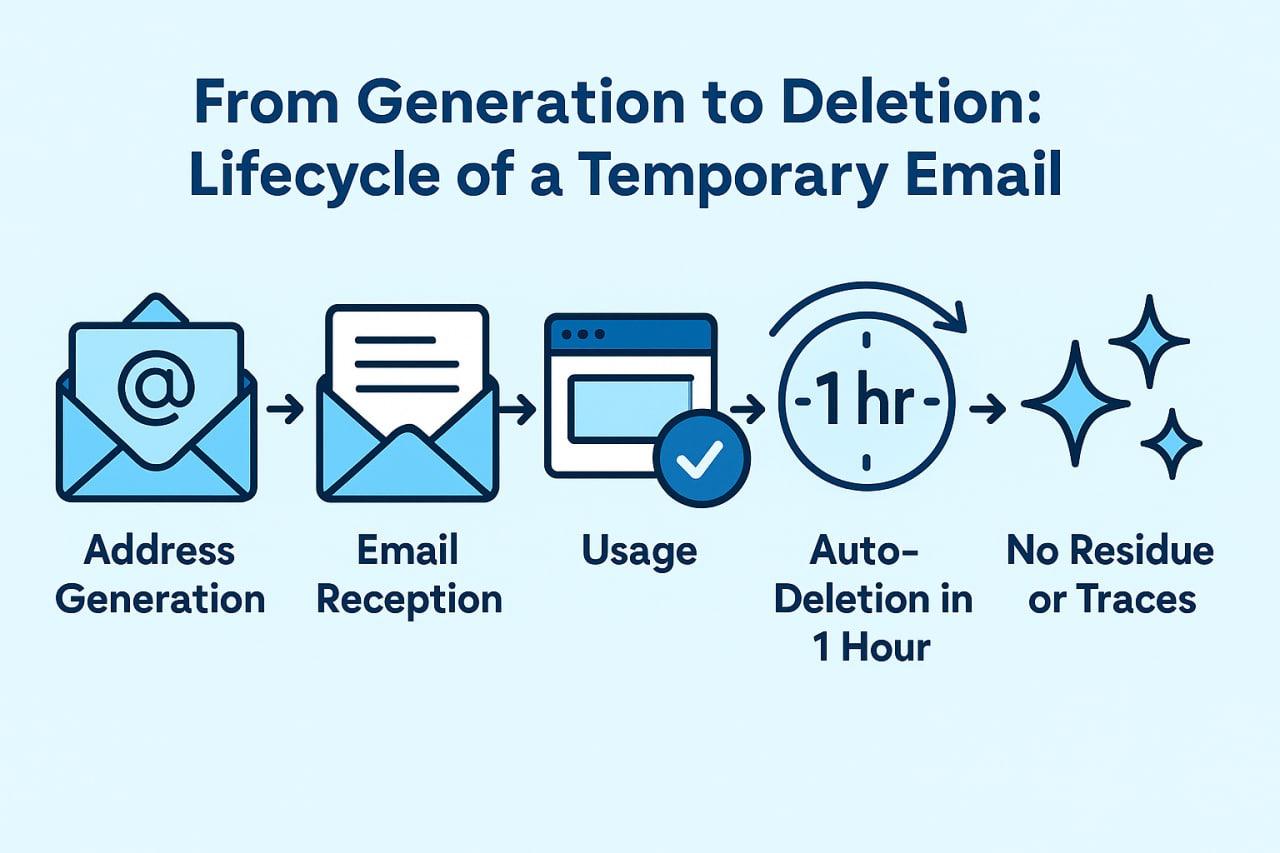
Joining discussion boards and public forums often means disclosing an email to strangers or administrators. Temporary email addresses reduce privacy risks by separating one's main inbox from online communities that could expose data.
Benefits include:
- Reducing the chance of targeted spam
- Avoiding exposure to phishing if the forum is compromised
This is particularly helpful when users want to participate anonymously or test a platform before committing real information. By using temporary addresses, users maintain tighter control over their digital footprint and online interactions.
Ensuring Spam Freedom with Temporary Email

Temporary email addresses provide targeted solutions for blocking unwanted promotional content and controlling the flow of newsletters. By isolating interactions, users retain greater authority over who can contact them and when.
Reducing Advertising Emails
Using a temporary email address when signing up for online services or shopping websites helps prevent personal inboxes from filling up with marketing emails. These addresses serve as a barrier, protecting main accounts from contact lists that advertisers often share or sell.
People can use disposables when they need to access a quick download, coupon, or free trial, shielding their real identity from becoming a target for ongoing promotions. Since these temporary accounts expire or are discarded easily, persistent advertising rarely reaches the user's primary inbox.
The main benefit is that promotional senders never receive permanent access to real contact details. This separation also reduces risks tied to data leaks, as temporary mailboxes do not contain sensitive personal information.
Managing Newsletter Overload
Online news portals, blogs, and retailers often encourage visitors to subscribe to newsletters. Regular sign-up practices lead to crowded inboxes as companies frequently send updates, seasonal offers, and announcements.
Users can subscribe with a temporary email, receiving initial content without enduring long-term email traffic. When they lose interest or find the volume excessive, the disposable address can be abandoned with no consequences.
This method is especially effective for those testing new services or comparing multiple sources. The ability to drop temporary accounts lets people avoid the tedious process of manually unsubscribing from numerous email lists each week.
Limitations and Risks of Temporary Email
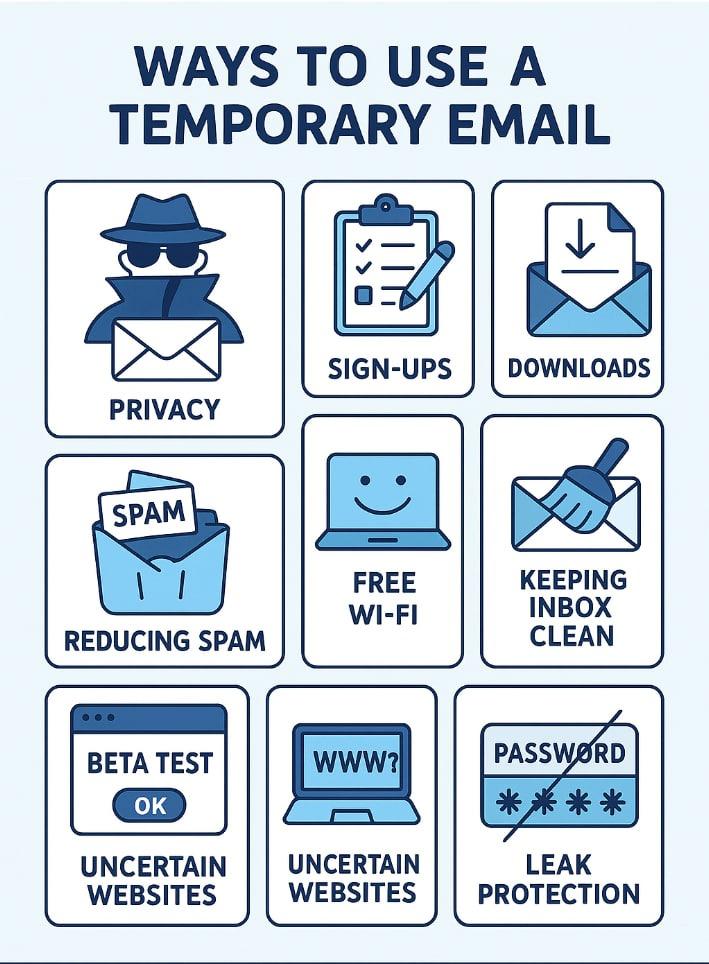
Temporary email services can be practical, but they come with real drawbacks that affect privacy, usability, and reliability. Users should carefully evaluate these aspects to avoid unintended problems when relying on disposable addresses.
Potential Issues with Account Recovery
Many online services use email as the main method for verifying identity and resetting passwords. If a user registers with a temporary email, recovering access becomes difficult or impossible once that address expires.
Some platforms may detect and reject temporary email domains during registration, causing account creation or access issues. Losing access to a critical account due to an expired or inaccessible temporary address can result in lost data or missed notifications.
Key risks include:
- Inability to receive password reset messages
- Loss of important service updates
- Permanent account loss if emails are deleted or inboxes are purged
Reliable account management often depends on a stable, long-term email address.
Security Concerns with Public Inboxes
Many temporary email providers use public or semi-public inboxes, which anyone can access by knowing the address. Sensitive information such as verification codes, account details, or personal data could be exposed to others.
Unlike standard email services, disposable inboxes rarely offer encryption, two-factor authentication, or strong access controls. This lack of protection increases the risk of email interception or misuse. Attackers may even monitor inboxes for valuable information to exploit.
Security risks include:
- Disclosure of private messages or login links
- Hijacking of accounts through intercepted verification codes
- Higher vulnerability to phishing or impersonation attempts
Using a temporary email for confidential or personal matters is generally unsafe.
Short Lifespan of Temporary Email Addresses
Most temporary email addresses are deleted automatically after a short time, often within a few minutes or hours. This means users may miss out on follow-up messages, delayed notifications, or additional verification steps.
Services sometimes send critical messages days after registration, such as account changes or policy updates. A temporary address will no longer be available to receive these. Important communications may be lost permanently and without warning.
| Temporary Email Lifespan | Risk of Missed Messages | Suitable Use Case |
|---|---|---|
| 10 minutes | Very High | Quick downloads, one-off verifications |
| 1 hour | High | Short signups, promo codes |
| 24 hours | Moderate | Trials, time-limited offers |
Selecting temporary email can disrupt communications if ongoing access is necessary.
Best Practices for Safe and Effective Use
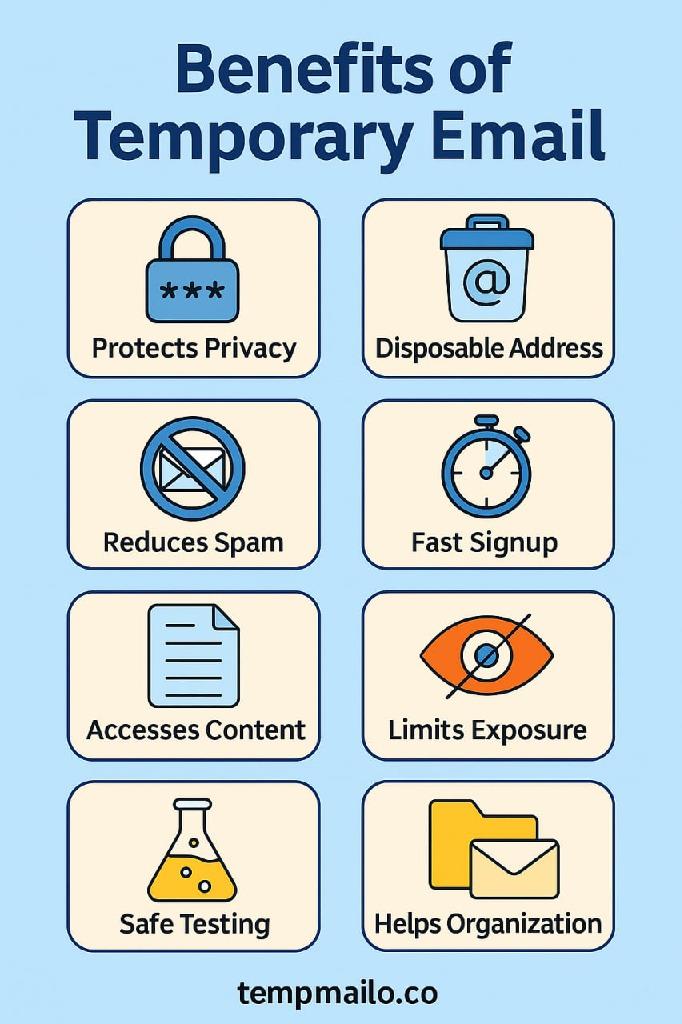
Users can maximize protection from spam and unwanted messages by carefully selecting where and how they use temporary emails. Smart choices also help limit security risks and improve privacy across different online activities.
Choosing Reputable Temporary Email Providers
Picking a trustworthy temporary email service is important for keeping data secure. Providers with strong security safeguards, such as encrypted connections and no data logging, protect personal information and reduce the risk of leaks. Reliable services often include features like auto-expiration of messages, minimal ad tracking, HTTPS support, and clear privacy policies.
Checklist for selecting a provider:
- Check for HTTPS or SSL encryption.
- Review privacy policies for data handling practices.
- Verify auto-deletion timelines for mailboxes and messages.
- Test user support or FAQ resources.
Users should avoid unknown or suspicious sites that may harvest or misuse email data. Regularly reviewing the provider's reputation through forums or independent tech sites can help identify the safest services. Never reuse any temporary email password on permanent accounts.
Combining with Other Privacy Tools
Temporary emails work best when used alongside other privacy safeguards. Virtual Private Networks (VPNs), browser trackers blockers, and secure browsers help mask users' identity and location, making it harder for third parties to correlate emails with real accounts.
| Tool | Purpose | Example |
|---|---|---|
| VPN | Hide IP address | ProtonVPN, Mullvad |
| Tracker Blocker | Stop ad and analytics tracking | uBlock Origin, Privacy Badger |
| Secure Browser | Reduce fingerprinting | Firefox, Brave |
By combining tools, users reduce direct traces left behind online. Always log out of temp email sessions after use, and avoid storing sensitive credentials in browser autofill when creating accounts with temporary addresses. This approach decreases the risk of data leaks or account takeover.
Conclusion
By integrating temporary emails into your regular online routine, you take a simple but powerful step toward a safer digital life. Ready to get started? Get your free temp mail address on TempMailo now and experience the peace of mind that comes with a clean, secure inbox.
 (اللغة العربية)
(اللغة العربية) English
English Руссский
Руссский Español
Español إيستي كيل
إيستي كيل Deutsch
Deutsch Italiano
Italiano 한인
한인 اللغة التركية
اللغة التركية 日本
日本 البرتغالية
البرتغالية Bahasa
Bahasa Polski
Polski Укранська
Укранська Češka
Češka Български
Български Svenska
Svenska Tiếng Việt
Tiếng Việt ελληνικά
ελληνικά แบบไทย
แบบไทย الفرنسية
الفرنسية Dutch
Dutch